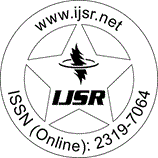Downloads: 131
Palestinian Territories | Chemistry | Volume 5 Issue 2, February 2016 | Pages: 2006 - 2011
Effect of Addition of HYPR and CABP on the Physiochemical and Mechanical Properties of Cement Pastes
Abstract: The lightweight aerated concrete, mortar and paste is recently acceptable for use in civil construction purposes as a result of their peculiar features such as heat-insulating, sound absorption, low self-weight and self-compacting features, hence their high workability, this features depend on their content of air. But their major demerits are its difficulty of high strength development when compared with normal ones. This paper studies the parameters leads to produce a sustainable aerated paste by choosing a suitable air-entraining agent which entrain wide range of air with minimum lose in strength. To reach this goal a comparative study is carried out between the effect of adding different percentages of each of the cationic surfactant alkyl dimethyl hydroxyl ethyl ammonium chloride (HYBR) and the amphoteric surfactant cocamido propyl betaine (CAPB) to some Portland cement pastes. The influence of the different surfactant concentrations and the mixing times on the air content of the pastes and accordingly the bulk density, compressive strength and microstructure of the hardened cement specimens is discussed. The results demonstrate the preference of using CAPB over HYBR because its ability to give a wide range of air dosage and its ability to improve the compressive strength.
Keywords: air-entraining agent, density, compressive strength, XRD, HYPR, CABP, surfactant
How to Cite?: Abdel Fattah A. Qaraman, Wafaa S. Hegazy, Faten Z. Mahmoud, Maha R. mohamed, "Effect of Addition of HYPR and CABP on the Physiochemical and Mechanical Properties of Cement Pastes", Volume 5 Issue 2, February 2016, International Journal of Science and Research (IJSR), Pages: 2006-2011, https://www.ijsr.net/getabstract.php?paperid=NOV151571, DOI: https://dx.doi.org/10.21275/NOV151571
